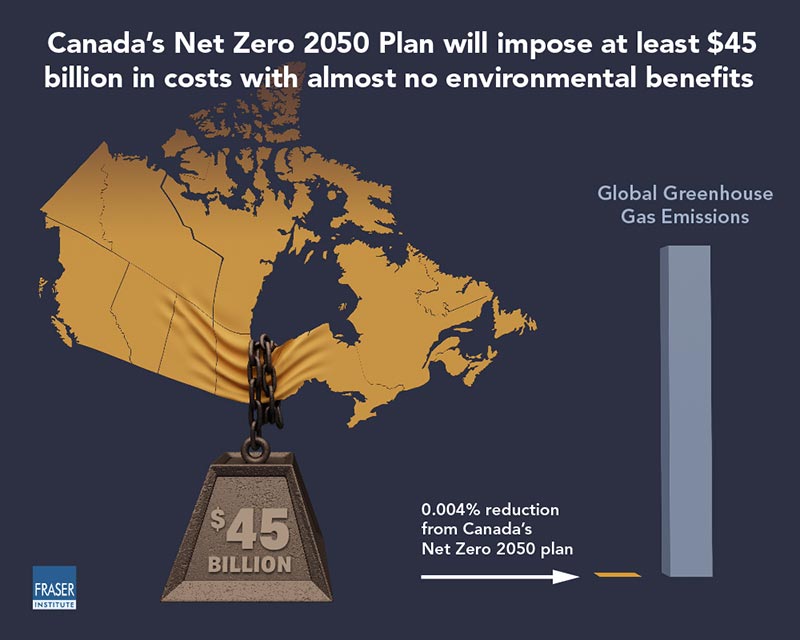Study
| EST. READ TIME 3 MIN.Ottawa’s emissions cap will cost economy at least $44 billion in 2030—with little environmental benefit
Canada’s GHG Cap on the Oil and Gas Industry Is All Pain With No Gain
In 2021, the Government of Canada enacted the Canadian Net-Zero Emissions Accountability Act, more commonly discussed as “Net-Zero Emissions 2050.” The goal of this Act is to ensure that in the year 2050, Canada’s emissions of greenhouse gases to the atmosphere are balanced by actions within Canada that pull greenhouse gases back out of the atmosphere, or at least, prevent some from entering that would otherwise have done so.
Pursuant to that, Canada enacted an interim plan, the 2030 Emissions Reduction Plan, which has a specific sub-component dealing with the greenhouse gas emissions that come from Canada’s oil and gas sector, a sector mostly found in Western Canada. This subcomponent would require “emission reductions [from the oil and gas sector] to 31% below 2005 levels in 2030 (or to 42% below 2019 levels)”, which would build a pathway to net-zero emissions by 2050.
This essay provides a rough estimate of the environmental benefits associated with imposing the GHG cap on the oil and gas industry. We show that eliminating all GHG emissions from the oil and gas sector in 2030 would reduce Canada’s projected GHG emissions by 29 percent. This is not a trivial number, as an absolute value, even for a single sector of Canada’s emitting industries.
However, when seen in a global context, even if Canada eliminated all of its GHG emissions expected in the year 2030 as a result of the new greenhouse gas caps implemented by the current government (187 Mt), the emission reduction would equal four-tenths of one percent of global emissions, a reduction unlikely to have any impact on the trajectory of the climate in any detectable manner, and hence, to offer only equally undetectable environmental, health, or safety benefits.
The calculated environmental benefits in this essay are even overestimated due to the risk of carbon leakage: studies have shown that greenhouse gas emissions are quite fungible meaning that they move from place to place where regulations allow. A recent study of the issue suggests that nearly 30 percent of any reductions made in Canada with regard to greenhouse gas emissions would simply be emitted elsewhere, as the emitting activity moved to more permissive jurisdictions.
In addition, the essay shows that the GHG cap imposed on the sector will inevitably curtail the production of oil and gas in the coming years and thereby result in negative economic impacts due to reduced production and exports. Recent estimates suggest the GHG cap will result in at least $45 billion in revenue losses for the industry in 2030 alone, which would imply a significant drop in government resource royalty and tax revenue.
But Canada does more with oil and gas than simply using it for heat, fuel, mobility, and so on. Canada’s oil and gas sector provides feedstocks into a very promising part of Canada’s economy, which is its growing petrochemical sector. This sector makes products such as plastics, solvents, and hundreds of other intermediate and end-user goods, many of which are not easily substitutable. Canada’s petrochemical industry in 2020 was responsible for creating some 4,800 jobs; exports were worth nearly $6 billion dollars. The resins, rubbers, and fibres sub-sector of Canada’s economy, again in 2020, employed nearly 5 million workers, and produced exports worth $7.8 billion.
Overall, the GHG cap imposed on the oil and gas industry will result in significant economic losses without generating material environmental benefits. This cap, which will inevitably curtail oil and gas production in Canada, will likely harm the petrochemical and plastics sectors, which use petroleum as a feedstock for producing their products.

